They Might Be Giants: Science is Real - a music video
Via my Daily on Twitter >>> Michael Banks (Twitter) >>> Rocking the physics message (physicsworld.com) >>> They Might Be Giants (ParticleMen, YouTube).
Read the rest of the article >>>
Read the rest of the article >>>
 TED is a nonprofit organization devoted to "ideas worth spreading." They are mostly known because of their growing collection of fascinating talks about a wide array of topics, including science, art and anything in-between (or around). The talks are recorded and the videos are freely available at their website, where you can also find information about the speakers and interactive transcripts (including translations to various languages).
TED is a nonprofit organization devoted to "ideas worth spreading." They are mostly known because of their growing collection of fascinating talks about a wide array of topics, including science, art and anything in-between (or around). The talks are recorded and the videos are freely available at their website, where you can also find information about the speakers and interactive transcripts (including translations to various languages).
In this post I'm collecting links to all the TED videos I could find related to the microbial world.
Topics include: life in the deep oceans, medical mysteries, bacterial Esperanto, predicting pandemics, robots turned into microbiologists, new approaches to handle infectious diseases, looking for life on Mars and beyond, fungi that could save the world, bacteria that may have caused mass extinctions...
Awesome, huh?
I'm also embedding a video for one of the latest TED talks: Seth Berkley: HIV and flu -- the vaccine strategy. The speaker, epidemiologist Seth Berkley, is the founder of the International AIDS Vaccine Initiative. In this talk, filmed last February, he spoke about new methods for making vaccines for AIDS and flu.
I also recommend reading this interview on the TED blog, where Seth Berkley commented on the same subject. I am copying here a few remarkable quotes:I was very disappointed by public concerns that we ordered too much flu vaccine and that some might get wasted. (...) I think that both declaring this a global pandemic and accelerating vaccine production as quickly as possible were the right decisions. If you want to prepare a population for an emergency it means that you might ultimately spend some money that isn’t used.
That's a good point. Many criticisms have been raised in the last months against WHO decisions in relation to the recent flu pandemic. And some of those criticisms were undeserved, in my opinion.
In the interview, Berkley explained why so much effort was put on developing treatments --rather than preventive vaccines-- for AIDS. And he described the extraordinary work they're doing with the International AIDS Vaccine Initiative.
To the question "Are the members of the younger generation of scientists as invested in creating a vaccine as was the case 10 years ago or so?" he responded:Sadly not. (...) The problem is not that young scientists don’t think vaccines are incredibly important, the problem is that it is seen as such a difficult problem, such a long-term problem that what they’re worried about is: Can they build a career on it? Can they get the types of breakthroughs they need in a rapid time frame that would make it a productive place to work?
It is disturbing that the "productivity" concept not only is doing harm to many researchers' careers but may also be slowing down the development of much-needed medical treatments...
Why not focus just on the treatment of infected people, and forget about an AIDS vaccine? Berkley explained:(...) from a public policy point of view, there’s great expense involved in dealing with the epidemic through treatment and reaching people when they’re already infected. (...) But this is a long-term entitlement program, because once you put somebody on treatment, they have to get treatment for the rest of their lives and they develop conditions, they develop toxicity and they need other treatments. So, there’s almost a sense now that all of the bright lights of that unbelievable effort -- the unprecedented emergency program for AIDS relief, Bush’s triumph that people look on as being a great thing that he did, will create a demand that gets higher and higher and higher just to keep up with where we are.
So, making an effective vaccine against AIDS may be very difficult. But it is worth the effort.
And finally, as promised, this is the list of other TED videos related to the small living beings (in chronological order, newest first):
[Added October 15th, 2010 -- Eben Bayer: Are mushrooms the new plastic? "Product designer Eben Bayer reveals his recipe for a new, fungus-based packaging material that protects fragile stuff like furniture, plasma screens -- and the environment." July 2010. Found via MicrobiologyBytes.] Magnus Larsson: Turning dunes into architecture. "Architecture student Magnus Larsson details his bold plan to transform the harsh Sahara desert using bacteria and a surprising construction material: the sand itself." July 2009.
Magnus Larsson: Turning dunes into architecture. "Architecture student Magnus Larsson details his bold plan to transform the harsh Sahara desert using bacteria and a surprising construction material: the sand itself." July 2009. Nathan Wolfe: hunting the next killer virus. "Virus hunter Nathan Wolfe is outwitting the next pandemic by staying two steps ahead: discovering deadly new viruses where they first emerge -- passing from animals to humans among poor subsistence hunters in Africa -- before they claim millions of lives." February 2009.
Nathan Wolfe: hunting the next killer virus. "Virus hunter Nathan Wolfe is outwitting the next pandemic by staying two steps ahead: discovering deadly new viruses where they first emerge -- passing from animals to humans among poor subsistence hunters in Africa -- before they claim millions of lives." February 2009. Bonnie Bassler: discovering bacteria's amazing communication system. "Bonnie Bassler discovered that bacteria "talk" to each other, using a chemical language that lets them coordinate defense and mount attacks. The find has stunning implications for medicine, industry -- and our understanding of ourselves." February 2009.
Bonnie Bassler: discovering bacteria's amazing communication system. "Bonnie Bassler discovered that bacteria "talk" to each other, using a chemical language that lets them coordinate defense and mount attacks. The find has stunning implications for medicine, industry -- and our understanding of ourselves." February 2009. Hans Rosling on HIV: New facts and stunning data visuals. "Hans Rosling unveils new data visuals that untangle the complex risk factors of one of the world's deadliest (and most misunderstood) diseases: HIV. He argues that preventing transmissions -- not drug treatments -- is the key to ending the epidemic." February 2009.
Hans Rosling on HIV: New facts and stunning data visuals. "Hans Rosling unveils new data visuals that untangle the complex risk factors of one of the world's deadliest (and most misunderstood) diseases: HIV. He argues that preventing transmissions -- not drug treatments -- is the key to ending the epidemic." February 2009.  Kary Mullis' next-gen cure for killer infections. "Drug-resistant bacteria kills, even in top hospitals. But now tough infections like staph and anthrax may be in for a surprise. Nobel-winning chemist Kary Mullis, who watched a friend die when powerful antibiotics failed, unveils a radical new cure that shows extraordinary promise." February 2009.
Kary Mullis' next-gen cure for killer infections. "Drug-resistant bacteria kills, even in top hospitals. But now tough infections like staph and anthrax may be in for a surprise. Nobel-winning chemist Kary Mullis, who watched a friend die when powerful antibiotics failed, unveils a radical new cure that shows extraordinary promise." February 2009.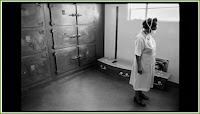 James Nachtwey fights XDR-TB. "Photojournalist James Nachtwey sees his TED Prize wish come true, as we share his powerful photographs of XDR-TB, a drug-resistant strain of tuberculosis that's touching off a global medical crisis. Learn how to help at http://www.xdrtb.org" October 2008.
James Nachtwey fights XDR-TB. "Photojournalist James Nachtwey sees his TED Prize wish come true, as we share his powerful photographs of XDR-TB, a drug-resistant strain of tuberculosis that's touching off a global medical crisis. Learn how to help at http://www.xdrtb.org" October 2008. Paul Stamets: six ways mushrooms can save the world. "Mycologist Paul Stamets lists 6 ways the mycelium fungus can help save the universe: cleaning polluted soil, making insecticides, treating smallpox and even flu." March 2008.
Paul Stamets: six ways mushrooms can save the world. "Mycologist Paul Stamets lists 6 ways the mycelium fungus can help save the universe: cleaning polluted soil, making insecticides, treating smallpox and even flu." March 2008. Peter Ward: Earth's mass extinctions. "Asteroid strikes get all the coverage, but "Medea Hypothesis" author Peter Ward argues that most of Earth's mass extinctions were caused by lowly bacteria. The culprit, a poison called hydrogen sulfide, may have an interesting application in medicine." February 2008.
Peter Ward: Earth's mass extinctions. "Asteroid strikes get all the coverage, but "Medea Hypothesis" author Peter Ward argues that most of Earth's mass extinctions were caused by lowly bacteria. The culprit, a poison called hydrogen sulfide, may have an interesting application in medicine." February 2008. Paul Ewald: can we domesticate germs? "Evolutionary biologist Paul Ewald drags us into the sewer to discuss germs. Why are some more harmful than others? How could we make the harmful ones benign? Searching for answers, he examines a disgusting, fascinating case: diarrhea.". March 2007. (I embedded this video in a previous post.)
Paul Ewald: can we domesticate germs? "Evolutionary biologist Paul Ewald drags us into the sewer to discuss germs. Why are some more harmful than others? How could we make the harmful ones benign? Searching for answers, he examines a disgusting, fascinating case: diarrhea.". March 2007. (I embedded this video in a previous post.)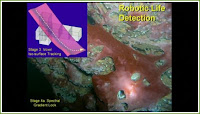 Bill Stone explores the world's deepest caves. "Bill Stone, a maverick cave explorer who has plumbed Earth’s deepest abysses, discusses his efforts to mine lunar ice for space fuel and to build an autonomous robot for studying Jupiter’s moon Europa." "How do you take a robot and turn it into a field microbiologist?" March 2007.
Bill Stone explores the world's deepest caves. "Bill Stone, a maverick cave explorer who has plumbed Earth’s deepest abysses, discusses his efforts to mine lunar ice for space fuel and to build an autonomous robot for studying Jupiter’s moon Europa." "How do you take a robot and turn it into a field microbiologist?" March 2007. Laurie Garrett on lessons from the 1918 flu. "In 2007, as the world worried about a possible avian flu epidemic, Laurie Garrett, author of "The Coming Plague," gave this powerful talk to a small TED University audience. Her insights from past pandemics are suddenly more relevant than ever." February 2007.
Laurie Garrett on lessons from the 1918 flu. "In 2007, as the world worried about a possible avian flu epidemic, Laurie Garrett, author of "The Coming Plague," gave this powerful talk to a small TED University audience. Her insights from past pandemics are suddenly more relevant than ever." February 2007. Penelope Boston says there might be life on Mars. "So the Mars Rovers didn't scoop up any alien lifeforms. Scientist Penelope Boston thinks there's a good chance -- a 25 to 50 percent chance, in fact -- that life might exist on Mars, deep inside the planet's caves. She details how we should look and why." February 2006.
Penelope Boston says there might be life on Mars. "So the Mars Rovers didn't scoop up any alien lifeforms. Scientist Penelope Boston thinks there's a good chance -- a 25 to 50 percent chance, in fact -- that life might exist on Mars, deep inside the planet's caves. She details how we should look and why." February 2006.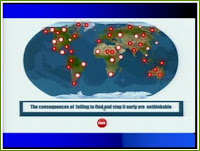 Larry Brilliant wants to stop pandemics. "Accepting the 2006 TED Prize, Dr. Larry Brilliant talks about how smallpox was eradicated from the planet, and calls for a new global system that can identify and contain pandemics before they spread". February 2006.
Larry Brilliant wants to stop pandemics. "Accepting the 2006 TED Prize, Dr. Larry Brilliant talks about how smallpox was eradicated from the planet, and calls for a new global system that can identify and contain pandemics before they spread". February 2006. Joe DeRisi solves medical mysteries. "Biochemist Joe DeRisi talks about amazing new ways to diagnose viruses (and treat the illnesses they cause) using DNA. His work may help us understand malaria, SARS, avian flu -- and the 60 percent of everyday viral infections that go undiagnosed." February 2006.
Joe DeRisi solves medical mysteries. "Biochemist Joe DeRisi talks about amazing new ways to diagnose viruses (and treat the illnesses they cause) using DNA. His work may help us understand malaria, SARS, avian flu -- and the 60 percent of everyday viral infections that go undiagnosed." February 2006.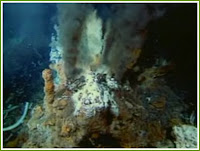 David Gallo on life in the deep oceans. "With vibrant video clips captured by submarines, David Gallo takes us to some of Earth's darkest, most violent, toxic and beautiful habitats, the valleys and volcanic ridges of the oceans' depths, where life is bizarre, resilient and shockingly abundant." February 1998.
David Gallo on life in the deep oceans. "With vibrant video clips captured by submarines, David Gallo takes us to some of Earth's darkest, most violent, toxic and beautiful habitats, the valleys and volcanic ridges of the oceans' depths, where life is bizarre, resilient and shockingly abundant." February 1998.
Read the rest of the article >>>


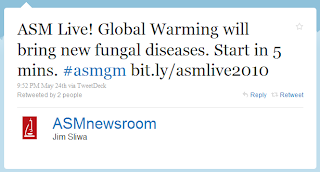



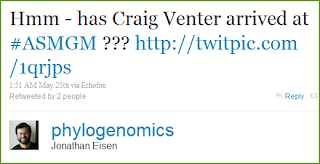
 Once the ASM meeting was over, I thought that a word cloud, as a visual representation of 'hot topics' (the most tweeted), could be a nice illustration for a blog post. So, I searched the internet looking for a suitable, user-friendly online tool that would generate -- automagically -- the perfect word cloud for me. But I did not find it.
Once the ASM meeting was over, I thought that a word cloud, as a visual representation of 'hot topics' (the most tweeted), could be a nice illustration for a blog post. So, I searched the internet looking for a suitable, user-friendly online tool that would generate -- automagically -- the perfect word cloud for me. But I did not find it.
 [Note: a tweetup is a meeting of two or more people who know each other through Twitter]
[Note: a tweetup is a meeting of two or more people who know each other through Twitter]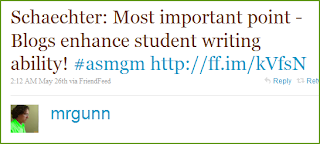
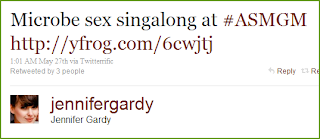

Read the rest of the article >>>
Lots of conferences and meetings on science-related topics are held every year, all over the world. Many of them cover wide topics with potential to excite the curiosity of a great number of scientists and --more importantly-- common people. Sometimes, a few highlights of a conference are reported by the mass media, and that's good...
...but wouldn't it be even better if anybody could catch a glimpse of a particular conference, in real time? What about getting comments made by some of the attendees about a talk that is happening right now? And, what if the speaker could answer, in real time, a question asked by anybody from anywhere in the world?
Well, this is already happening, thanks to the internet!
In this blog post and an upcoming one, I'll describe some examples on how social media and other internet tools were used during a recent meeting of the American Society for Microbiology.
If you keep reading, you might learn a couple of interesting things about microbes. I also hope that these blog posts may give us all some food for thought about possible, better uses of the internet (and, in particular, social media) for the communication of science.
I'll be waiting for your comments, so don't be shy, I'm learning here! The American Society for Microbiology (ASM) is the largest life science membership organization in the world, with over 43,000 members (and more than one third of them, like myself, are located outside the United States). General meetings, held once a year, are huge events with over 10,000 attendees, and cover new research related to the biology of microbes.
The American Society for Microbiology (ASM) is the largest life science membership organization in the world, with over 43,000 members (and more than one third of them, like myself, are located outside the United States). General meetings, held once a year, are huge events with over 10,000 attendees, and cover new research related to the biology of microbes.
The latest general meeting took place in San Diego (May 23-27), and I tried to follow the event as closely as possible through the internet. Good for me: many attendees shared their thoughts, in real time, using social media. Also, and I think this is praiseworthy, the ASM actively used a battery of social media channels, and broadcasted on the internet several live interviews with selected scientists. And all this internet activity was freely available to anyone.
During those days, I followed the messages that the ASM and the attendees posted on Twitter, the popular microblogging service. To do this, I didn't need to know who was attending the meeting -- I just searched for Twitter messages (a.k.a. tweets) containing the following tag (or hashtag) that was chosen beforehand by the organizers: #asmgm (abbreviation for "ASM general meeting"). In the simplest way, this can be done using the "search" function of Twitter, as you can see if you click here (but note that tweets older than a few days are not retrieved).
So, when somebody wanted to post a tweet related to the ASM meeting, they just added the #asmgm hashtag, as in this example:
The tweet was written by science writer Carl Zimmer, and was one of the most retweeted messages during the meeting. It referred to a talk entitled "The biochemistry of beer" being given at that precise moment by Charlie Bamforth, a professor from the University of California, Davis.
Other Twitter messages posted by meeting attendees were also retweeted many times. I wonder how far the #asmgm tweets reached, having in mind that some of the twitterers at the ASM meeting had many hundreds of Twitter followers (e.g. Carl Zimmer has over 18,000)... Is there a practical way to calculate the total audience that a single tweet has had during a certain period? I don't know -- but I'm pretty sure that the room where Charlie Bamforth gave his "beer talk" wasn't big enough to hold all the people who read his "mustache quote" on Twitter.
Another memorable quote from the ASM meeting was:
The quote was pronounced by Edward DeLong, professor at the Massachusetts Institute of Technology, during his talk "Evolution and ecology in microbial ecosystems: unity in diversity." On a later tweet, Zimmer wrote: "Clarification of previous tweet/koan: genomes are not fixed. They are ever-changing, swapping genes, shuffling segments, mutating,etc."
Finally, another tweet by Carl Zimmer summarised a general idea that is common knowledge among microbiologists (or so I like to think) but might sound like news to many other people:
I'm not sure where the quote came from, as there were many talks going on at the same time (the meeting program has 350 pages, and that's without abstracts!). But it's clear that most types of bacteria on Earth are harmless to us. I would even say that most microbes don't even know that we humans exist... It's only because of our hard-to-eradicate anthropocentrism that we feel that microbes exist only to make us sick (and to provide us with beer, of course!).
But this blog post is getting very long, so I'm interrupting it here. The story about the ASM meeting and social media continues in my next post.
Read the rest of the article >>>

The above image is a word cloud generated from about 1200 tweets (that is, messages posted on the microblogging service Twitter). All these tweets are related to the general meeting of the American Society for Microbiology (ASM), which was recently held in San Diego, California (May 23-27).
Please wait for my next blog post, where I'm going to tell you about a few things that could be learnt about microbes by following the ASM meeting on the internet -- no matter your physical location on Earth (and beyond?). Also, I'm going to explain how I made the word cloud -- I'm pretty sure there must be a better and easier way to do this, so I would certainly appreciate your feedback on my next post.
Note: unfortunately, the tags in the cloud are not hyperlinked. The image was generated using Wordle.
Read the rest of the article >>>
Except where otherwise noted, blog posts by Cesar Sanchez in Twisted Bacteria are licensed under a Creative Commons Attribution 3.0 Unported License. Please let me know if any quotes or images on this blog are improperly credited. E-mail: TwistedBacteria AT gmail DOT com . Social media icons by Oliver Twardowski and AddThis.